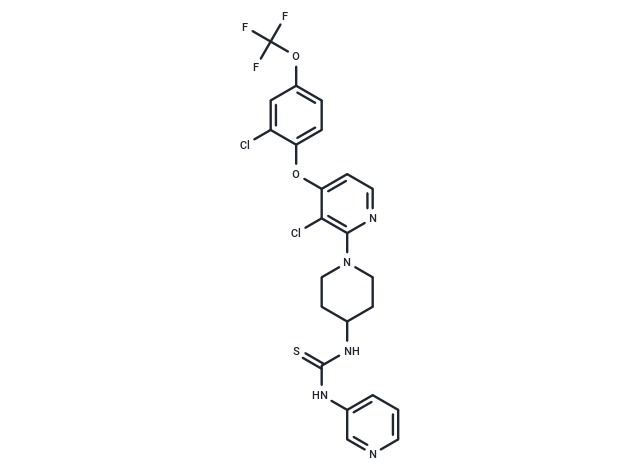Shopping Cart
- Remove All
 Your shopping cart is currently empty
Your shopping cart is currently empty

DO-264 is an inhibitor of autohydrolase structural domain 12 (ABHD12) (IC50: 11 nM) and an inhibitor of cellular LysoPS degradation that enhances LPS-induced phagocytosis.

| Pack Size | Price | Availability | Quantity |
|---|---|---|---|
| 1 mg | $52 | In Stock | |
| 5 mg | $123 | In Stock | |
| 10 mg | $198 | In Stock | |
| 25 mg | $438 | In Stock | |
| 50 mg | $745 | In Stock | |
| 100 mg | $1,050 | 6-8 weeks | |
| 1 mL x 10 mM (in DMSO) | $148 | In Stock |
| Description | DO-264 is an inhibitor of autohydrolase structural domain 12 (ABHD12) (IC50: 11 nM) and an inhibitor of cellular LysoPS degradation that enhances LPS-induced phagocytosis. |
| Targets&IC50 | ABHD12:11 nM |
| In vitro | DO-264 elevated the lyso-PS and 20:4 PS content of primary human macrophages[1]. |
| In vivo | Mice treated with DO-264 exhibited a dose-dependent increase in brain lyso-PS and 20:4 PS content, which qualitatively resembled changes observed in ABHD12(-/-) mice. Additionally, both ABHD12(-/-) and DO-264-treated mice displayed exacerbated immunopathology following infection with the lymphocytic choriomeningitis virus (LCMV) clone 13, resulting in severe inflammatory lung damage, heightened chemokine production, and, in some cases, death.[1]. |
| Molecular Weight | 558.4 |
| Formula | C23H20Cl2F3N5O2S |
| Cas No. | 2301866-59-9 |
| Smiles | FC(F)(F)Oc1ccc(Oc2ccnc(N3CCC(CC3)NC(=S)Nc3cccnc3)c2Cl)c(Cl)c1 |
| Relative Density. | 1.52 g/cm3 (Predicted) |
| Storage | store under nitrogen,store at low temperature | Powder: -20°C for 3 years | In solvent: -80°C for 1 year | Shipping with blue ice. | |||||||||||||||||||||||||||||||||||
| Solubility Information | DMSO: 80 mg/mL (143.27 mM), Sonication is recommended. | |||||||||||||||||||||||||||||||||||
Solution Preparation Table | ||||||||||||||||||||||||||||||||||||
DMSO
| ||||||||||||||||||||||||||||||||||||

Copyright © 2015-2025 TargetMol Chemicals Inc. All Rights Reserved.